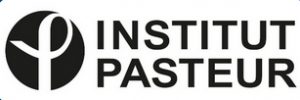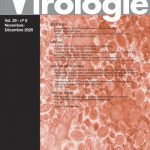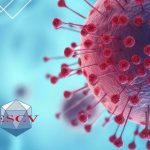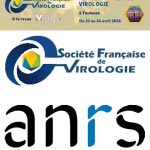 Viral / nuclear mechanodynamics trigger viral fate
Viral / nuclear mechanodynamics trigger viral fate
A research scientist position is available at the Institut Pasteur to join the Advanced Molecular Virology laboratory, which is focused on the basic study of the early steps of the HIV-1 life cycle. Early steps of the viral life cycle are important for the establishment of viral reservoirs that represent a bottleneck for discovering a cure. How replication of viruses in the host nucleus applies mechanical forces within the compartment that remodel the chromatin landscape, thereby impacting both functional and physical properties of the
nucleus will be evaluated in a close collaboration with the King lab at Yale University, which is focused on nuclear mechanics, mechanotransduction and genome integrity.
The project aims to investigate mechanisms implicated in the remodeling of the nuclear compartment during infection. Our studies highlight that among pandemic viruses, HIV-1 influences important biological processes to effectively replicate in the host cell. Some of these viruses trigger a phenomenon called liquid-liquid phase separation (LLPS) to form membraneless organelles (MLOs) involved in several cellular functions. This is a newly characterized biological phenomenon, prompted also by HIV-1 infection, which is likely to aid viral replication or persistence and is still unexplored. We aim to determine how the
mechanical state of the nuclear envelope and nuclear pore complexes influences key events in the viral life cycle: nuclear entry, reverse transcription, integration, formation of viral liquid droplets (HIV-MLOs) and entrance into latency. In addition, we will study the role that the LINC complex plays in the fate of viral infection.
Our group combines molecular/cell biology, virology and quantitative microscopy techniques, such as single particle tracking of viral genomes. This project will leverage unique live cell tools we have developed to track the virus as it reverse transcribes its genome directly into the host cell. The candidate will have the opportunity to work with several cutting-edge platforms on the campus, with a collaborative interdisciplinary team and an enthusiastic/passionate mentor. Enthusiastic, motivated and passionate candidates, holding a Ph.D. degree in virology, cell biology, biophysics or related fields are encouraged
to apply. The Institut Pasteur provides excellent training and collaborative environment for research.
For more information regarding projects in the laboratory, please visit:
https://research.pasteur.fr/en/team/advanced-molecular-virology/
Position funded from ANR-PRCI available from April 2024
Duration: 24 months
To apply, please send an email with a motivation letter, CV and contact information of three references to: Francesca Di Nunzio
Related publications from the Di Nunzio’s laboratory:
1: Ay S, Di Nunzio F. HIV-Induced CPSF6 Condensates. J Mol Biol. 2023 Aug
15;435(16):168094. doi: 10.1016/j.jmb.2023.168094. Epub 2023 Apr 14. PMID:
37061085.
2: Di Nunzio F. Stress-induced condensate switch awakens sleeping viruses. Cell
Host Microbe. 2023 May 10;31(5):679-680. doi: 10.1016/j.chom.2023.04.008. PMID:37167945.
3: Scoca V, Morin R, Collard M, Tinevez JY, Di Nunzio F. HIV-induced
membraneless organelles orchestrate post-nuclear entry steps. J Mol Cell Biol.
2022 Apr 6;14(11):mjac060. doi: 10.1093/jmcb/mjac060. PMID: 36314049; PMCID:PMC10117160.
4: Blanco-Rodriguez G, Di Nunzio F. The Viral Capsid: A Master Key to Access the Host Nucleus. Viruses. 2021 Jun 20;13(6):1178. doi: 10.3390/v13061178. PMID: 34203080; PMCID: PMC8234750.
5: Scoca V, Di Nunzio F. Membraneless organelles restructured and built by pandemic viruses: HIV-1 and SARS-CoV-2. J Mol Cell Biol. 2021 Aug 4;13(4):259-268. doi: 10.1093/jmcb/mjab020. PMID: 33760045;
PMCID: PMC8083626.
6: Scoca V, Di Nunzio F. The HIV-1 Capsid: From Structural Component to Key
Factor for Host Nuclear Invasion. Viruses. 2021 Feb 10;13(2):273. doi:10.3390/v13020273. PMID:33578999; PMCID: PMC7916756.
7: Rensen E, Mueller F, Scoca V, Parmar JJ, Souque P, Zimmer C, Di Nunzio F.
Clustering and reverse transcription of HIV-1 genomes in nuclear niches of macrophages. EMBO J. 2021 Jan 4;40(1):e105247. doi: 10.15252/embj.2020105247. Epub 2020 Dec 3. PMID: 33270250; PMCID:
PMC7780146.
8: Blanco-Rodriguez G, Gazi A, Monel B, Frabetti S, Scoca V, Mueller F, Schwartz O, Krijnse-Locker J, Charneau P, Di Nunzio F. Remodeling of the Core Leads HIV-1 Preintegration Complex into the Nucleus of Human Lymphocytes. J Virol. 2020 May 18;94(11):e00135-20. doi: 10.1128/JVI.00135-20. PMID:
32238582; PMCID: PMC7269431 (Cover August 2020)
9: Buffone C, Martinez-Lopez A, Fricke T, Opp S, Severgnini M, Cifola I, Petiti L, Frabetti S, Skorupka K, Zadrozny KK, Ganser-Pornillos BK, Pornillos O, Di Nunzio F, Diaz-Griffero F. Nup153 Unlocks the Nuclear Pore Complex for HIV-1 Nuclear Translocation in Nondividing Cells. J Virol. 2018 Sep 12;92(19):e00648-
18. doi: 10.1128/JVI.00648-18. PMID: 29997211; PMCID:
PMC6146805.
10: Lelek M, Casartelli N, Pellin D, Rizzi E, Souque P, Severgnini M, Di Serio C, Fricke T, Diaz-Griffero F, Zimmer C, Charneau P, Di Nunzio F. Chromatin organization at the nuclear pore favours HIV replication. Nat Commun. 2015 Mar 6;6:6483. doi: 10.1038/ncomms7483. PMID: 25744187; PMCID: PMC4366494.
11: Di Nunzio F. New insights in the role of nucleoporins: a bridge leading to concerted steps from HIV-1 nuclear entry until integration. Virus Res. 2013 Dec 26;178(2):187-96. doi: 10.1016/j.virusres.2013.09.003. Epub 2013 Sep 16. PMID: 24051001.
12: Di Nunzio F, Fricke T, Miccio A, Valle-Casuso JC, Perez P, Souque P, Rizzi E, Severgnini M, Mavilio F, Charneau P, Diaz-Griffero F. Nup153 and Nup98 bind the HIV-1 core and contribute to the early steps of HIV-1 replication. Virology. 2013 May 25;440(1):8-18. doi: 10.1016/j.virol.2013.02.008. Epub 2013 Mar 21.
PMID: 23523133; PMCID: PMC3860269.




